In 1922, Leonard Halladay tied up a mayfly imitation on the banks of Michigan’s Boardman River, and then handed the fly to his friend Charles Adams to take with him fishing. The rest is history, as the fly old Chuck tied on at the river proved to be an excellent attractor dry fly, and now, bearing the angler’s last name, is recognized as perhaps the best dry fly ever crafted.
But flies these days get their names in wholly different manners. To wit: anyone who has cast a Peanut Envy or a Sex Dungeon might wonder what goes through Kelly Galloup’s mind when he’s crafting a new fly at the vise. No longer do we name new patterns after the folks who create them. That’s out the window with what might now be considered “old-school” patterns, like the Copper John, the Dahlberg Diver, Lefty’s Deceiver or the Clouser.
It’s no wonder, really. Fly patterns, unlike music or prose or literally any other type of art, don’t seem to inspire intellectual property claims. Fly tiers are like the musicians of the Grateful Dead. Just as the music flowed from Jerry’s guitar to the masses, fly patterns leave the original vise to be ever-so-shamefully imitated.
So, there’s no real need or, it seems, real desire, to attach the name of the artist to the work. So now we get stream-of-consciousness monikers from the likes of Galloup or even John Barr (the John in Copper John), who tied the first Slumpbuster and then apparently opted not to put his name on it.
The Slumpbuster got its name for what it supposedly does best — it catches fish (all kinds of fish, mind you), when nothing else will. I would not disagree. Not even a little. Over the years, I’ve been fortunate enough to put the Slumpbuster to work in both saltwater and freshwater, and it’s scared up everything from burly bowfin in the blackwater swamps of the South to dusky rockfish off the coast of Alaska to just about everything in between.
More Like This
There are times when nothing else seems to work except for this easy-to-tie pattern that consists of little more than a bead or a conehead, a touch of flash and a single strip of rabbit fur. It looks like anything from a sculpin to a leech. Tied in different colors, it can go from being a bass fly to a tarpon fly. This last spring, on the beaches of southwest Florida, a cream-colored Slumpbuster helped me catch my only snook of the trip. Later that same week, a chartreuse version of the Slumpbuster nabbed a black oscar from a canal along the Tamiami Trail.
But what’s best about the Slumpbuster — aside from its uncanny ability to catch predatory fish of nearly every stripe — is how easy it is to tie at the vise. It’s only slightly more complicated than a Woolly Bugger. As with any pattern, the Slumpbuster can be altered or manipulated. Spirited vise monkeys might like to add in some rubber legs, or use a colored bead for the head. I have taken to tying my Slumpbusters, which I use here in eastern Idaho mainly for carp and smallmouth bass, with a stinger hook and three tying beads threaded along the trailing 10-pound monofilament. The beads serve two purposes — first, they encourage the stinger hook to remain in sync with the rabbit-strip tail of the fly when the fly is stripped in, and, second, they add a bit of flash and give the fly the illusion of a bit more substance.

But make no mistake about it, it remains John Barr’s venerable Slumpbuster, a fly he likely intended to resemble a baitfish. But, with “modifications” (and if you search the web for “Slumpbuster,” you’ll find dozens upon dozens of these alterations to Barr’s clean, simple pattern), the fly can resemble anything from the intended minnow or small baitfish to a leech.
I love fishing for northern pike in the boreal lakes of Saskatchewan and Manitoba with dark black Slumpbusters. Reel in a pike or a walley or two, and you’ll often see the leeches attached to the fish, so you know they’re in the water. Pike are enthusiastic predators, and they’ll chase a size 8 Slumpbuster so readily that you might think they’re doing it out of revenge.
The Slumpbuster, even with the stinger hook, is a simple tie. Here’s the basic recipe:
- A medium-sized streamer hook (size 6 or size 8)
- An appropriately sized bead for the head
- One strip of rabbit fur (about six inches should work) in the color of your choice
- Two strands of tinsel
- Three small tying beads in the color of your choice (I usually go with gold- or silver-tinted brass, but for weight, you can use tungsten)
- One six-inch length of 10-pound monofilament (make it 40-pound spider wire if you’re chasing pike, barracuda, mackerel or bluefish)
- One stinger hook (use a stinger that’s a size or two smaller than your main hook)
Start with the medium-sized streamer hook — I like size 8, but I’ve used hooks as big as a size 4 and small as a size 10 — and slide the bead you want to use for the head along the shank to behind the hook eye. Tie your thread in directly behind the bead (I use Ultra Thread 210 denier) and wrap it back to the bend in the hook. Take your two strands of tinsel and fold them over twice. Tie in the folded end of the tinsel at the bend and wrap forward. Trim the loops out of the tinsel that hang off the bend of the hook.
Then, take your length of mono, and slide your stinger hook onto it. Fold it in half and then slide the three tying beads over both tags of the line. Slide them back to the hook, leaving a loose loop between the first bead and the hook eye of the stinger.
Next, tie the two ends of the folded mono to the shank of the main hook, about half-way up. Tie them in good, and wrap back to the bend and then back to the tie-in point three or four times. Don’t worry about the thread bulk — your rabbit fur will cover everything up nicely.
Next, take your six-inch length of rabbit fur and cut off — at an angle — a two-inch-long strip. With the “grain” of the fur stretching back, secure the strip just above the bend. Spin your thread clockwise to cord it up, and tie it back along the rabbit fur to the bend. Go back and forth from the bend to the tie-in point a few times so it’s very secure.
Next, take the rest of your rabbit strip and, after removing the fur from the first ⅛ of an inch or so (just pinch it and pull it off), tie it to the shank right at the bend. Wrap your thread up the shank to just behind the hook eye. If you tie it in correctly, when you palmer the strip of fur up the shank, the fur will flare out, but generally “flow” back toward the tail of the fly. Carefully wrap the strip up the hook, using the fingers of your left hand to stretch the fur backward so you’re only wrapping the strip on the hook shank and not over the fur you’ve already attached. When you get to the bead, make sure the strip is tight against it — make one more wrap than you think you need.
Finally, carefully tie off the strip of rabbit fur, and, again, give it a few more wraps than you think you might need. Whip-finish the fly right behind the bead — I do two five-turn whips to make sure it’s very secure.
Congrats. You’ve tied your first Slumpbuster. See if it doesn’t do for you what it does for me.




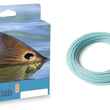
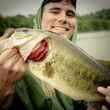








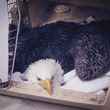








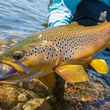
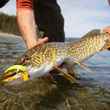



Comments
Guy replied on Permalink
I heard Gallup state in a podcast that he did not name the Sex Dungeon. He said a woman did, but he did not mentioned her name.
Joe Bare replied on Permalink
Great article! But just to be clear John's Original Slumpbuster is tied with Pine Squirrel not Rabbit.
Pages